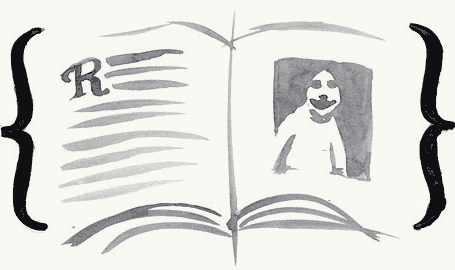Jeffrey Zeldman's Blog, page 53
June 15, 2012
Divorce never sleeps
SO THE EX just moved to Manhattan’s most iconic private housing community. It is a large residential complex of oversized, renovated apartments set in an 80-acre private park. The sprawling collection of red brick buildings abuts the East River and the neighborhoods of Gramercy Park, the East Village, Alphabet City, and Kips Bay. It is a minute’s walk from anywhere you’d want to be on New York’s East Side. Yet it feels nothing like the grid-bound island of Manhattan. It is more like a dream suburb set in a manicured woodland.
I’ve been to the development twice since my ex moved there about a week ago. The first time I experienced a mild vertigo as I entered the maze of circling paths and identical red brick apartment towers. It was as if gravity itself could disappear without Manhattan’s rigid street grid.
The second visit was tonight. An early, handmade father’s day present and a quick goodnight kiss for my daughter before leaving on a business trip tomorrow. Then the girl got on her new bicycle — her first real bike, complete with training wheels — and the three of us began strolling the development’s safe, sprawling grounds. I noted fountains, a library, a huge green filled with picnicking families, a play center for young children, a study center for older children, and a basketball court before I stopped ticking off, and feeling slightly overwhelmed by, the development’s endless parade of private amenities.
“They’re going to put a coffee shop over there,” my ex said, pointing beyond a grove of hydrangeas.
Within a few minutes, we had run into one of Ava’s favorite school friends and her parents and were strolling with them while the girls biked in tandem, chased fireflies, and played tag with some younger kids. In my Manhattan, play dates must be arranged with the skill of a social director and the finesse of an event planner. Fail, and your kid has no one to play with that day. But this strange pocket of the city is like a small town: simply by going out the door of their apartment building, kids find each other and play in complete safety. No scheduling necessary. For adults, too, apparently, constant, pleasant social interactions are available simply by walking out your front door. No need for Foursquare, Twitter, or even a phone.
My ex introduced me to my daughter’s friend’s father. “This is a great place to raise kids,” he said — not knowing who I was, not realizing I was the father of the kid his kid was playing with, not knowing the lady his wife was talking to used to be my wife.
Divorce keeps breaking your heart.
You think you’re past it. You no longer sit bolt upright at 2:00 AM, asking yourself what you could have done to save the marriage. You no longer worry that your kid will become a junkie because her parents divorced. You no longer imagine the neighbors finding your dead, naked body in a room full of flies, cats, and pizza boxes. You no longer dread your lawyer’s call.
You enjoy your ex as a friend. You and she are equally committed to your child’s well-being, and that is all that matters. You take care of yourself, you’ve learned life lessons, you’re a better dad, a better man, a better worker than you were three years ago. Life is an adventure again.
And then, bang. Your kid is laughing ecstatically in a seemingly utopian environment you did not provide for her and you are not part of. The easy adult social interactions that are unfolding belong to your ex’s new life, not yours. You are watching your family move on without you, you are discovering all over again, as if for the first time, that your family has exploded, your wife does not love you, does not need you, the world goes on without you, this is not my beautiful house, this is not my beautiful wife.
June 14, 2012
See me in New York today, in Boston next week

I AM EXCITED to participate this morning in Reasons To Be Creative, NYC, where I’ll give a talk on “The End of Web Design;” and at An Event Apart Boston starting Monday, where I’ll make the case for “Content First” in web design.
Reasons To Be Creative New York
June 14–15, 2012
An Event Apart Boston
June 18–20, 2012
June 13, 2012
Live today at 3PM Eastern: Readability naked and trembling on Big Web Show
LIVE TODAY AT 3:00 PM (technology willing), tune in to 5by5 live as I interview Rich Ziade, founder, hero, and villain behind the Readability reading platform, whose latest controversial move, announced earlier today, is to give $150,000 to charity.
I’ll ask Rich to answer charges that Readability crosses a line in the emerging orbital content space which other products in that space somehow have not crossed. I’ll also ask him to explain his vision for the platform, and tell us where it goes next. Got questions for Rich? Post them on Twitter using hashtag #askReadability.
After the live session, the interview will live on eternally as Episode 71 of The Big Web Show.
Subscribe to The Big Web Show
The Big Web Show features special guests and topics like web publishing, art direction, content strategy, typography, web technology, and more. Get episodes delivered automatically:
Audio RSS Feed
iTunes Audio
Readability ends reader fee program, gives uncollected funds to accessibility and writing charities
TODAY MY FRIENDS at Arc 90 announced that, as of June 30, 2012, Readability will no longer accept reader fees. Further, they will donate any uncollected funds to charities that support reading and writing. They’ll start by donating $50,000 to 826 Valencia and another $50,000 to Knowbility.
Readability has taken a lot of flack, and been accused of all kinds of base motives. The truth is, these people did these things because they love writers, love reading, love the web, and believe content and readers have gotten a raw deal because of the way most websites are designed.
The need to maximize ad revenue accounts for many of those anti-reader decisions, and so the people behind Readability — who love writers and publishers — tried this experiment, seeking a better way to let readers pay for content.
Had it worked, it would have changed our industry for the better, and might have saved small publishers who are drowning in this environment. It didn’t work. Not this year, not at this time. Live and learn and move on.
I salute my friends at Readability for giving a damn about writers, readers, and content and for at least trying to think of a sustainable solution to the problem of who pays for content.
June 12, 2012
Build Books With CSS3; Design a Responsive Résumé
“WE ARE ALL PUBLISHERS,” claims Issue No. 353 of A List Apart for people who make websites. Design books with CSS3; craft a responsive web résumé.
Building Books with CSS3
by NELLIE MCKESSON
While historically, it’s been difficult at best to create print-quality PDF books from markup alone, CSS3 now brings us the Paged Media Module, which targets print book formatting. “Paged” media exists as finite pages, like books and magazines, rather than as long scrolling stretches of text, like most websites. With a single CSS stylesheet, publishers can take XHTML source content and turn it into a laid-out, print-ready PDF. You can take your XHTML source, bypass desktop page layout software like Adobe InDesign, and package it as an ePub file. It’s a lightweight and adaptable workflow, which gets you beautiful books faster. Nellie McKesson, eBook Operations Manager at O’Reilly Media, explains how to build books with CSS3.
A Case for Responsive Résumés
by ANDREW HOFFMAN
Grizzled job hunting veterans know too well that a sharp résumé and near-flawless interview may still leave you short of your dream job. Competition is fierce and never wanes. Finding new ways to distinguish yourself in today’s unforgiving economy is vital to a designer/developer’s survival. Happily, web standards whiz and mobile web developer Andrew Hoffman has come up with a dandy differentiator that is just perfect for A List Apart readers. Learn how to author a clean résumé in HTML5/CSS3 that scales well to different viewport sizes, is easy to update and maintain, and will never grow obsolete.
Illustration by Kevin Cornell for A List Apart.
June 8, 2012
Friday Photo
May 22, 2012
Publication Standards
ENJOY A LIST APART’S SPECIAL two-part issue on digital publication standards.
Publication Standards Part 1:
The Fragmented Present
by NICK DISABATO
ebooks are a new frontier, but they look a lot like the old web frontier, with HTML, CSS, and XML underpinning the main ebook standard, ePub. Yet there are key distinctions between ebook publishing’s current problems and what the web standards movement faced. The web was founded without an intent to disrupt any particular industry; it had no precedent, no analogy. E-reading antagonizes a large, powerful industry that’s scared of what this new way of reading brings—and they’re either actively fighting open standards or simply ignoring them. In part one of a two-part series in this issue, Nick Disabato examines the explosion in reading, explores how content is freeing itself from context, and mines the broken ebook landscape in search of business logic and a way out of the present mess.
Publication Standards Part 2:
A Standard Future
by NICK DISABATO
The internet is disrupting many content-focused industries, and the publishing landscape is beginning its own transformation in response. Tools haven’t yet been developed to properly, semantically export long-form writing. Most books are encumbered by Digital Rights Management (DRM), a piracy-encouraging practice long since abandoned by the music industry. In the second article of a two-part series in this issue, Nick Disabato discusses the ramifications of these practices for various publishers and proposes a way forward, so we can all continue sharing information openly, in a way that benefits publishers, writers, and readers alike.
Illustration by Kevin Cornell for A List Apart.
Readlists: behind the scenes

FROM THE HOME PAGE of today’s newly announced, totally disruptive, completely free product powered by Readability: “What’s a Readlist? A group of web pages—articles, recipes, course materials, anything—bundled into an e-book you can send to your Kindle, iPad, or iPhone.”
For some time now, people who miss the point have seen Readability as an app that competes in the read-it-later space. That’s like viewing Andy Warhol as a failed advertising art director. Readability is a platform that radically rethinks how we consume, and who pays for, web content. It monetizes content for authors and its technology is available to all via the API. It scares designers, angers some advertisers. Its transformative potential is huge. Readlists are the latest free product to manifest some of that potential.
With Readlist, anyone can create ebooks out of existing web content. It’s easy. Sign in with your Readability account or sign up for one, and start making books of your favorite web articles.
There are still some bugs being worked out, but hey.
I was honored to beta test the product and create one of the first Readlists, along with Erin Kissane, Anil Dash, Aaron Lammer, David Sleight, and Chris Dary.
Disclaimer: I am on the advisory board of Readability and cofounded The Deck advertising network with Jim Coudal and Jason Fried. Readability removes clutter (including ads) from the reading experience; The Deck sells ads. Conflict of interest? Here’s another: I design content websites so as to make Readability unnecessary (because I design for readers); yet I strongly support Readability as a platform and above all as a web idea that is at least 15 years overdue. Either designers will design for their end-users, or third-party apps will remove designers from the transaction. As a designer, I’m not afraid of that. Rather, it inspires me.
Enjoy Readlists.
May 18, 2012
Serial entrepreneur Dan Benjamin on Episode 70 of The Big Web Show
DAN BENJAMIN is my guest on Episode No. 70 of The Big Web Show, the weekly podcast on “everything web that matters.”
Dan is a broadcaster, screencaster, writer, software developer, designer, and entrepreneur. He is the founder of 5by5 Studios, an internet broadcasting network where he hosts a handful of shows with people like John Gruber, Merlin Mann, and me. Dan is the author of Hivelogic and has written for A List Apart and O’Reilly.
For almost two decades, Dan has created publishing tools including those which have powered A List Apart and 5by5. He devised the Email Address Enkoder, co-founded Cork’d, and founded Playgrounder. The latter two have since been acquired by Gary Vaynerchuk and Uncrate, respectively.
Listen to Episode No. 70 of The Big Web Show, featuring Dan Benjamin.
Subscribe to The Big Web Show
The Big Web Show features special guests and topics like web publishing, art direction, content strategy, typography, web technology, and more.
Get episodes delivered to you automatically:
Audio RSS Feed
iTunes Audio
Web Design Manifesto 2012

THANK YOU for the screen shot. I was actually already aware that the type on my site is big. I designed it that way. And while I’m grateful for your kind desire to help me, I actually do know how the site looks in a browser with default settings on a desktop computer. I am fortunate enough to own a desktop computer. Moreover, I work in a design studio where we have several of them.
This is my personal site. There are many like it, but this one is mine. Designers with personal sites should experiment with new layout models when they can. Before I got busy with one thing and another, I used to redesign this site practically every other week. Sometimes the designs experimented with pitifully low contrast. Other times the type was absurdly small. I experimented with the technology that’s used to create web layouts, and with various notions of web “page” design and content presentation. I’m still doing that, I just don’t get to do it as often.
Many people who’ve visited this site since the redesign have commented on the big type. It’s hard to miss. After all, words are practically the only feature I haven’t removed. Some of the people say they love it. Others are undecided. Many are still processing. A few say they hate it and suggest I’ve lost my mind—although nobody until you has suggested I simply didn’t have access to a computer and therefore didn’t know what I was designing. This design may be good, bad, or indifferent but it is not accidental.
A few people who hate this design have asked if I’ve heard of responsive web design. I have indeed. I was there when Ethan Marcotte invented it, I published his ground-breaking article (and, later, his book, which I read in draft half a dozen times and which I still turn to for reference and pleasure), and I’ve had the privilege of seeing Ethan lecture and lead workshops on the topic about 40 times over the past three years. We’ve incorporated responsive design in our studio’s practice, and I’ve talked about it myself on various stages in three countries. I’m even using elements of it in this design, although you’d have to view source and think hard to understand how, and I don’t feel like explaining that part yet.
This redesign is a response to ebooks, to web type, to mobile, and to wonderful applications like Instapaper and Readability that address the problem of most websites’ pointlessly cluttered interfaces and content-hostile text layouts by actually removing the designer from the equation. (That’s not all these apps do, but it’s one benefit of using them, and it indicates how pathetic much of our web design is when our visitors increasingly turn to third party applications simply to read our sites’ content. It also suggests that those who don’t design for readers might soon not be designing for anyone.)
This redesign is deliberately over the top, but new ideas often exaggerate to make a point. It’s over the top but not unusable nor, in my opinion, unbeautiful. How can passages set in Georgia and headlines in Franklin be anything but beautiful? I love seeing my words this big. It encourages me to write better and more often.
If this were a client site, I wouldn’t push the boundaries this far. If this were a client site, I’d worry that maybe a third of the initial responses to the redesign were negative. Hell, let’s get real: if this were a client site, I wouldn’t have removed as much secondary functionality and I certainly wouldn’t have set the type this big. But this is my personal site. There are many like it, but this one is mine. And on this one, I get to try designs that are idea-driven and make statements. On this one, I get to flounder and occasionally flop. If this design turns out to be a hideous mistake, I’ll probably eventually realize that and change it. (It’s going to change eventually, anyway. This is the web. No design is for the ages, not even Douglas Bowman’s great Minima.)
But for right now, I don’t think this design is a mistake. I think it is a harbinger. We can’t keep designing as we used to if we want people to engage with our content. We can’t keep charging for ads that our layouts train readers to ignore. We can’t focus so much on technology that we forget the web is often, and quite gloriously, a transaction between reader and writer. Most of you reading this already know all this and already think about it each time you’re asked to create a new digital experience. But even our best clients can sometimes push back, and even our most thrilling projects typically contain some element of compromise. A personal site is where you don’t have to compromise. Even if you lose some readers. Even if some people hate what you’ve done. Even if others wonder why you aren’t doing what everyone else who knows what’s what is doing.
I don’t think you will see much type quite this big but I do think you will see more single-column sites with bigger type coming soon to a desktop and device near you. For a certain kind of content, bigger type and a simpler layout just make sense, regardless of screen size. You don’t even have to use Typekit or its brothers to experiment with big type (awesome as those services are). In today’s monitors and operating systems, yesterday’s classic web fonts—the ones that come with most everyone’s computer—can look pretty danged gorgeous at large sizes. Try tired old Times New Roman. You might be surprised.
The present day designer refuses to die.










